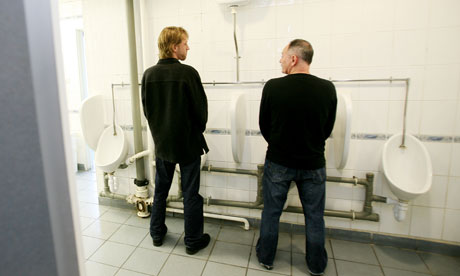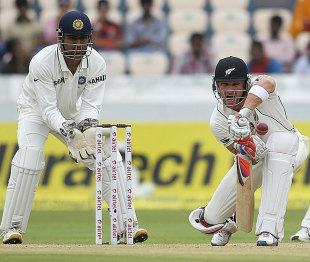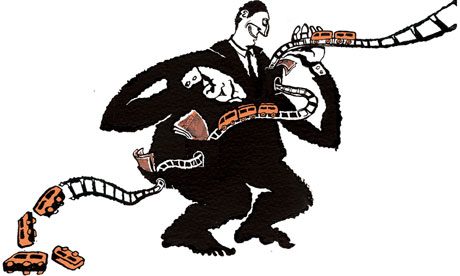Robert Colville in The Telegraph
One of humanity’s besetting sins is that we’re addicted to charisma. Besotted by it, even. We look for the leader with the movie-star looks, the resounding oratory – the sheer, obvious talent. A Steve Jobs can behave abominably to his underlings, can decide that deodorant is for the little people, and still we swoon.
But is this really a good idea? Over the past few decades, English cricket has been conducting what might be termed an uncontrolled experiment in management theory. The lab rats in question have been those poor souls faced with the uniquely impossible demands of the national captaincy: helping to select a team, motivating the players, producing tactical plans and modifying them on the fly, coping with media scrutiny, and all the while maintaining their own level of performance.
Sometimes, there has been an obvious candidate – as yesterday, when Alastair Cook accepted the job with the air of a crown prince assuming his birthright. Cook, like Mike Atherton, was an “FEC”, a player always earmarked as a Future England Captain. But in their absence, the authorities invariably haver between charisma and character. For every Mike Brearley, whose man-management skills lay behind Ian Botham’s destruction of the Aussies, there is a – well, an Ian Botham, who had only just resigned the captaincy after a miserable tenure.
The temptation is often to hand the leadership to the player who shines the brightest, to a Botham or an Andrew Flintoff or Kevin Pietersen, in the (usually forlorn) hope that he can galvanise others with his sheer ability. There is, however, another path. Andrew Strauss, who resigned as captain yesterday, shares Pietersen’s South African birthplace, yet is his opposite in terms of character, temperament and playing style. Pietersen is the stupendously athletic strokemaker. Strauss is the man who had to work for his place, for his captaincy, for every one of his 7,037 Test runs.
As an England novice, he was “Lord Brocket” and “PT” (the P stands for “Posh”; the T is less kind). He failed an audition for the captaincy, losing out to Flintoff, only getting the job after Pietersen’s intrigues against the then coach resulted in both losing their jobs.
Here’s the strange thing, though. As a leader, Pietersen was a flop: on a tour of India, wrote team-mate Graeme Swann in his autobiography, the superstar was briefly reduced “to a period of screaming '----ing bowl ----ing straight’ at everyone”. It was his replacement as captain who led England to back-to-back Ashes victories (the second gloriously crushing), and briefly to the status of No 1 in the world.
Strauss would perhaps not make the short list for history’s greatest captain: as well as the many Australian or West Indian contenders, there is Graeme Smith of South Africa, who finished off not just Strauss’s captaincy, but those of Michael Vaughan and Nasser Hussain too. Even in purely English terms, Vaughan probably eclipses his former lieutenant for his hint of unorthodoxy, his tactical flair.
Strauss, though, is the man you trust to get the job done – the one to lead a polar expedition, to do everything by the book, and to bring his men back alive. “Strauss is one of those guys who demand respect,” writes Swann, “and on a daily basis you never really fathom why. He just does. He always says the right things, whether it be in team meetings or press conferences, and his word is never questioned.” Except by Pietersen, who disliked his captain so much that he reportedly advised the South Africans on how to get him out.
Was it a failure that Strauss, and coach Andy Flower, could not reconcile this wayward genius to a regime of grinding perfectionism? Perhaps. Yet surveys of what makes for a great corporate leader tend to look surprisingly like profiles of Andrew Strauss. In her book Quiet – which argues that flashiest is not always best – Susan Cain observes that true greats display “extreme humility coupled with intense professional will”: they are not messianic Steve Jobs types, but those “who build not their own egos, but the institutions they run”.
The rivalry between Strauss and Pietersen, then, incarnates not just the great divide within English cricket, but in leadership more generally. Study after study has shown that we pay attention to those who shout the loudest, who make the boldest claims. In the process, we wildly overestimate the role of pure luck and the contribution of others.
True, charisma does have its place. Yet for all that it would be wonderful to see Pietersen light up Lord’s again, it seems somehow fitting that he and Strauss, yin and yang, are locked together on 21 Test centuries, one behind the national record. At the start of his career, you would have found few takers for Strauss ending up in a position of such pre-eminence. But then, as Iain Duncan Smith once noted, you should never underestimate the determination of a quiet man.









